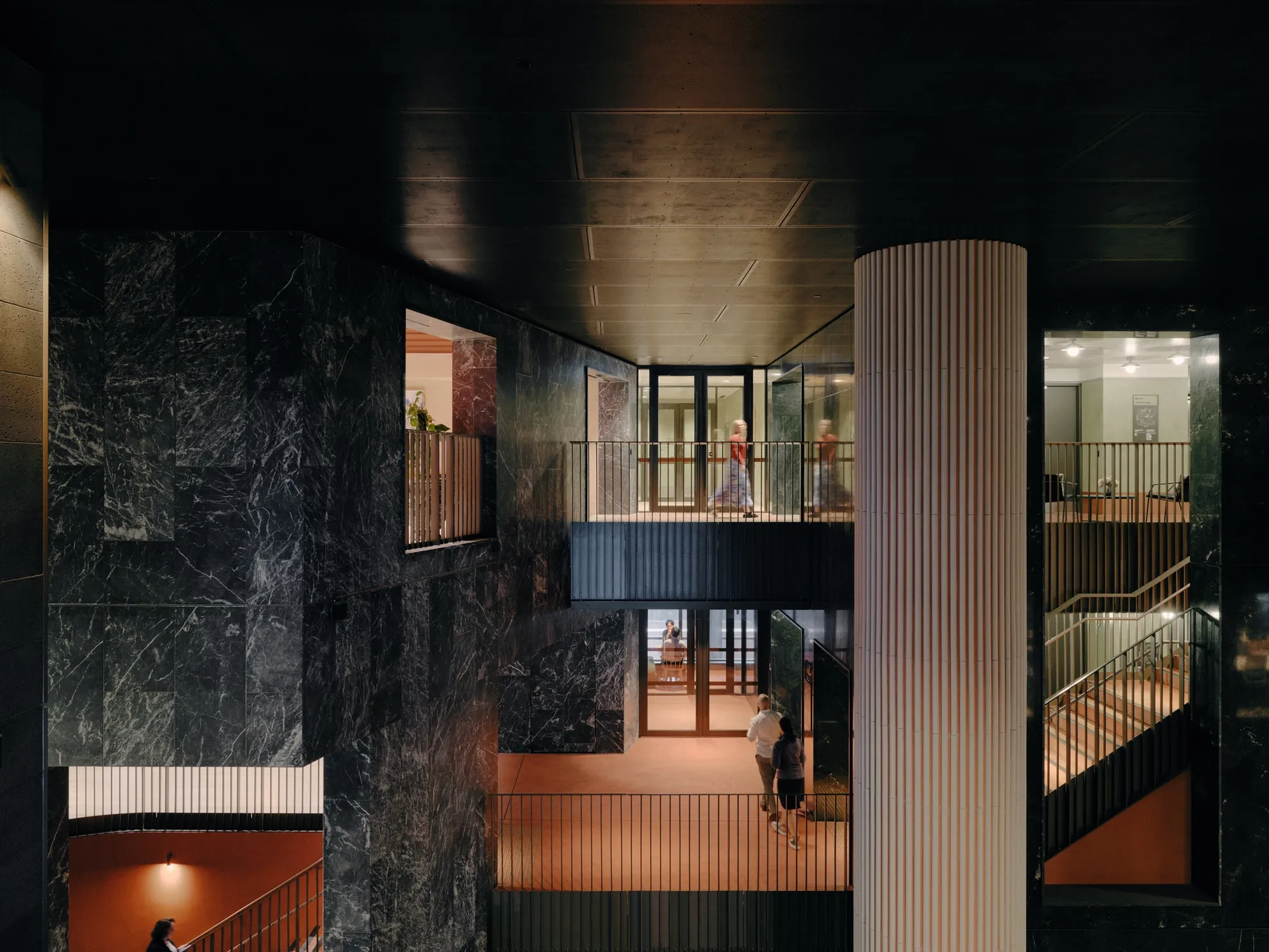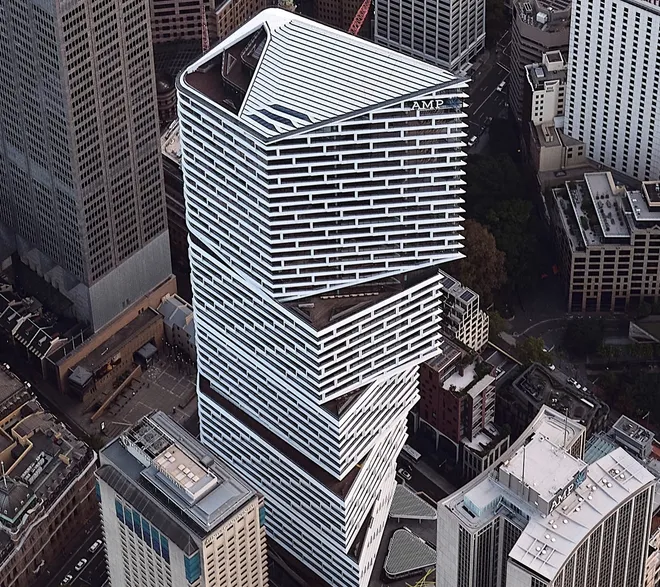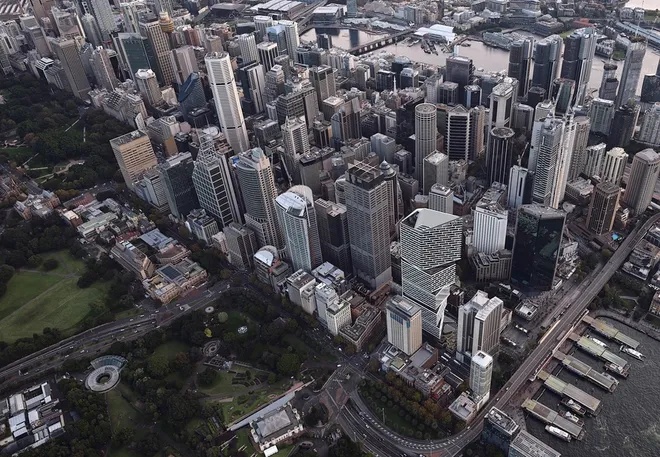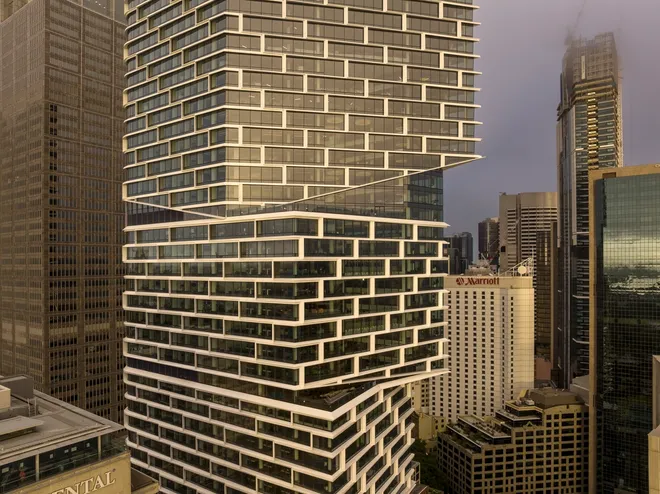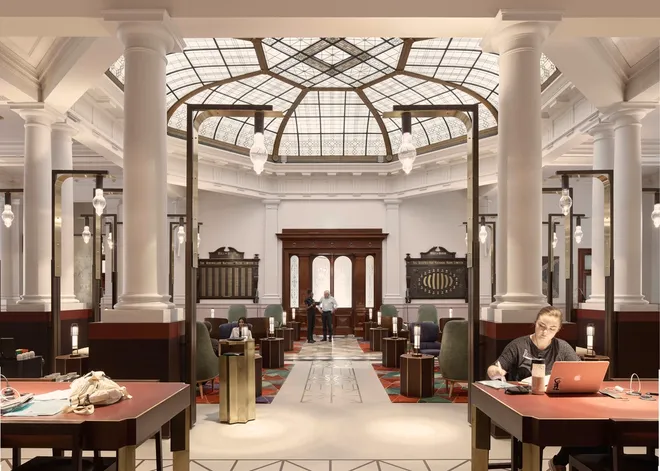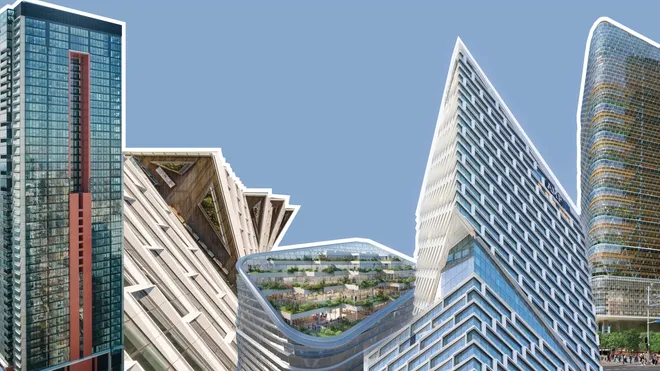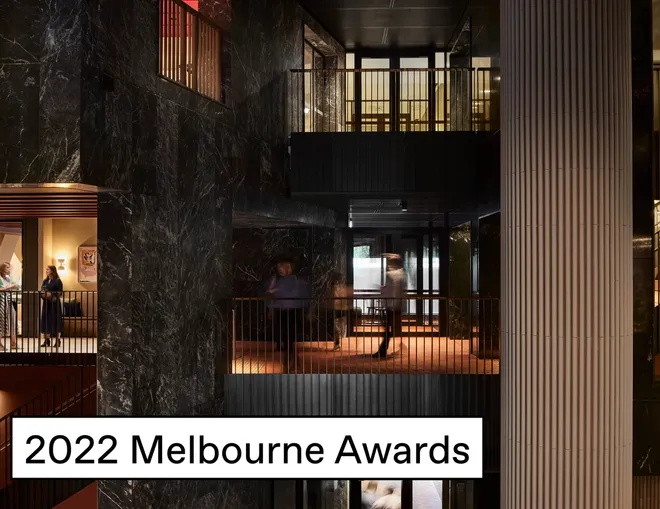BVN Stories, Events — June 7, 2024
Fueling the retrofit revolution: outtakes from our MDW events
• Reimagine • Repurpose • Refurbish • Reuse • Regenerate • Reshape • Reinvigorate • Renew • Re-life •
It's been a big few weeks! Time to share perspectives from the two Retrofitting Our Cities events we held at Queen & Collins as part of Melbourne Design Week 2024.
On Wednesday 29 May, it was a full house for our panel event in the impressive mezzanine of Queen & Collins. BVN Principals and co-hosts Sally Campbell
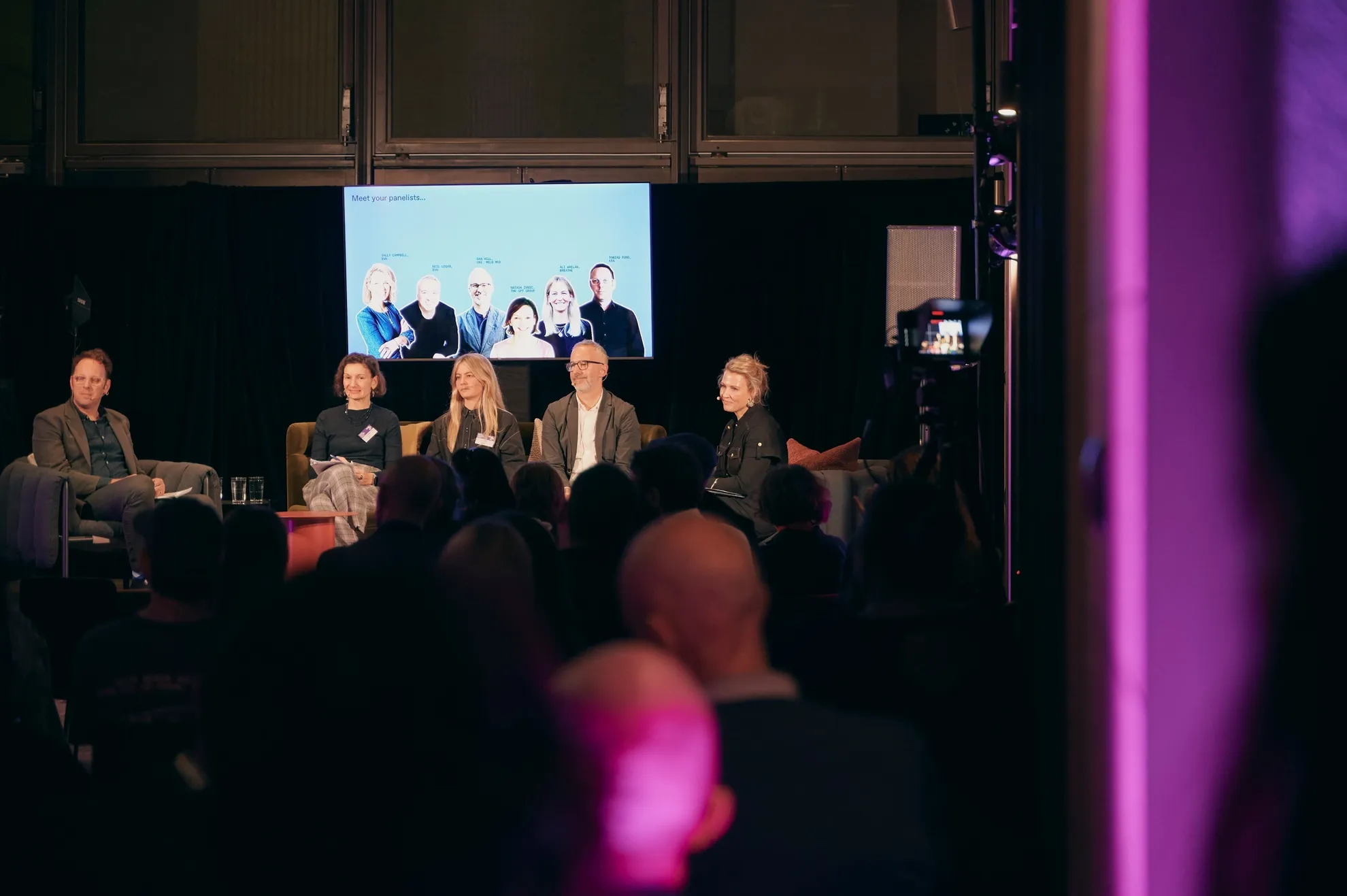
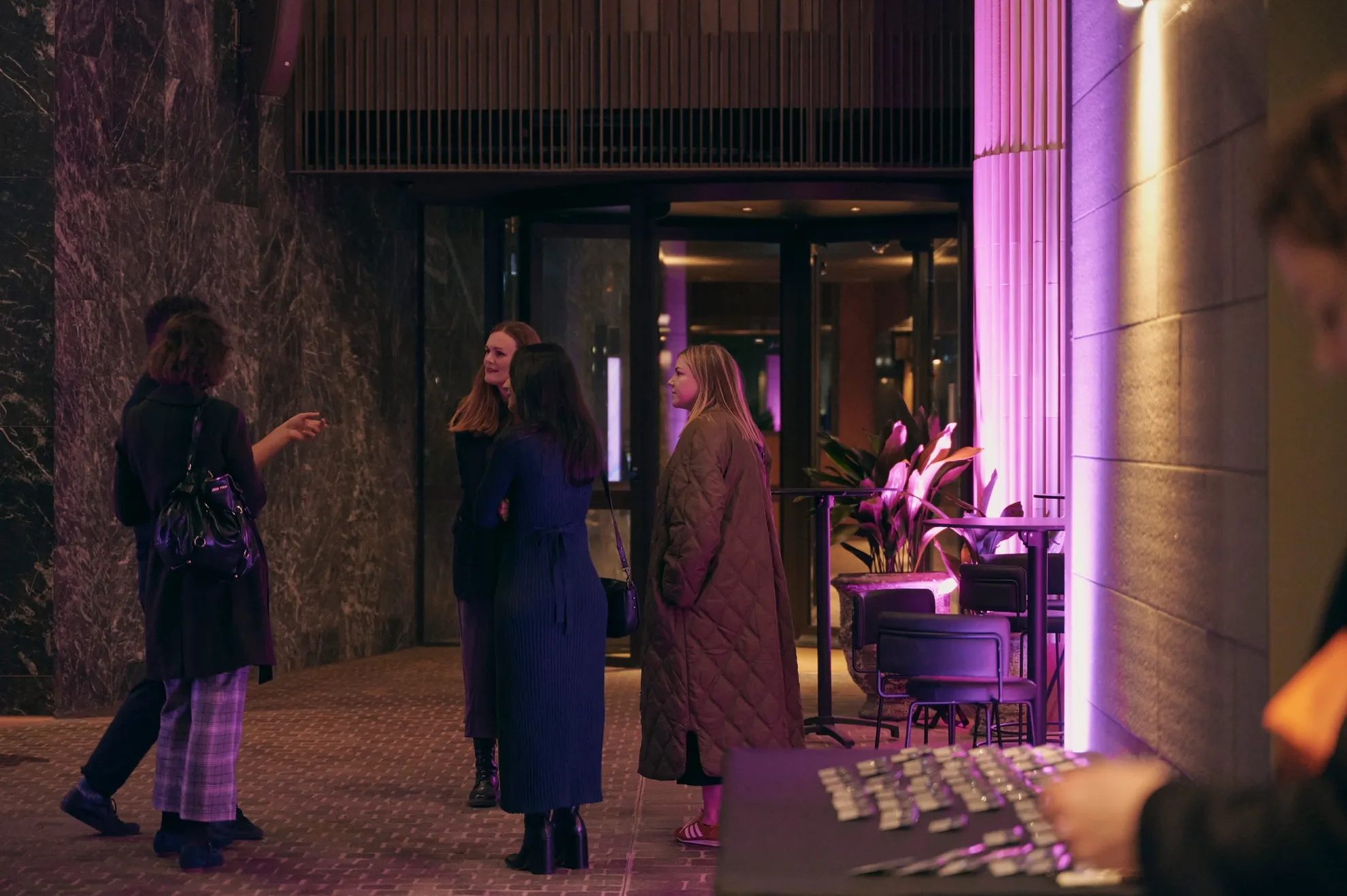

After an acknowledgement of Country, our co-hosts set the scene with a showcase of buildings and urban pockets – of all types and scales – radically transformed through retrofitting, repurposing, adapting and reusing existing built fabric.
These ingenious award-winning interventions included Breathe’s Oxley Lodge – a sustainably updated apartment building designed for renters; KTA’s reimagining of the former Mounted Police Stables into the VCA Faculty of Fine Arts & Music; BVN’s restored and reinvigorated Brutalist landmark Sirius

As well as a lively discussion on repurposing buildings that focused on positive outcomes such as waste reduction and improving asset viability, the panel exposed opportunities for urban reinvention that call on designers, developers, building owners and governments to accelerate retrofit and re-life projects – at scale – to meet our collective climate and community responsibilities.
Retrofitting, repurposing and adaptive re-use are popular topics right now, but they’re not new. Perhaps we keep talking about them because progress is far more challenging and incremental than we want to admit. There seem to be relentless legislative, governmental, financial and moral headwinds, however the imperative to act and transform our built environment becomes more urgent every year, especially in the face of the climate crisis, housing crisis, cost of living crisis... These panel discussions help to move beyond 'why retrofit?' into 'what's really holding us back?' so we can shape scalable solutions.
Principal and co-host, Sally Campbell.

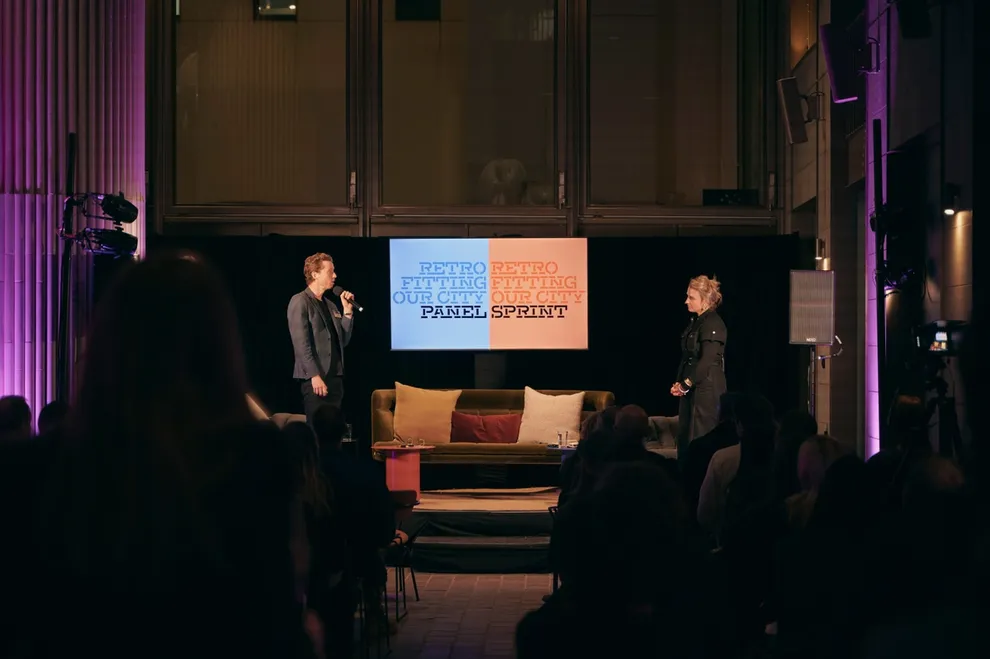

Photos: Kayla May.
Sally and Neil opened proceedings with a provocation: if we could design the world we want, why would we focus on retrofitting our cities?
For Dan Hill, the answer could be as simple as “there is no alternative”.
Toby Pond concurred. “We need to make our cities perform better – for people and the planet. The way we traditionally build doesn’t meet our current and future needs. We need to radically improve our practice and retrofitting is one way to do that”.
According to Natasha Zunic, the time is nigh to “disrupt how we consume”.
Ali Whelan agreed, reminding us that the building and construction industry is responsible for 30% of global greenhouse gas emissions and 40% of all Australia’s waste is from construction and demolition.
“Not only do we need to radically pivot the way we think about designing a building, we need to completely reconsider the value proposition,” implored Ali.

Value is generally calculated through financial metrics, however it can – and should – be reframed to focus on common good.

Let's reframe value so we have the future city – a complex, equitable and diverse city that we can thrive in – within planetary boundaries.
There is an argument that the value of retrofitting starts from the opposite, which is what happens if we don’t retrofit existing buildings? If our cities continue to expand and grow, we lose farmland, we lose habitat, we lose biodiversity…
So, for designers, developers and building owners, existing assets and infrastructure become the biggest opportunity – just as homeowners have restored, renovated, altered and extended houses to adapt to their current and future needs.
“We don't create cities to build buildings,” said Dan. “Cities evolve through our collective desire for culture, community, commerce and conviviality”.
Value lies in creating healthy, happy places. Without retrofit, we can’t get anywhere near that. We don’t have the resources, the materials, the carbon budget for it.
Melbourne School of Design Director, Dan Hill.
The real design challenge is urban resilience and resourcefulness.
For Ali, there is a beauty in acknowledging that an adaptation might be ‘perfectly imperfect’, revealing more of its history through less waste as in the case of Oxley Lodge.
To accelerate sustainable city-shaping, Toby suggested “We don’t need new buildings, full stop. The answer is figuring out how to get by with what we already have.” And as he posited, each retrofit comes with the invitation and obligation to reflect both the city’s history and that of First Nations Country and culture.
The panel continued by exploring barriers to retrofitting our cities and ways to combat them creatively. Where the number one barrier is upfront cost, the panel considered the need for financial incentives and supply chain overhaul. Where another mitigating factor is that many existing buildings hadn’t been designed with any provision for a different future, the panel proposed transformative zoning and building regulation reassessment (recalling the success of Postcode 3000 in the 1990s) while designing re-fits and new builds for ‘loose fit’ and ‘long life’.
After a volley of questions from our highly engaged audience, the panel event concluded with recognition that sufficiency – the notion that what exists is already enough – begets more creative solutions for urban reform, resilience and regeneration.
In Australia, our cities are relatively young. Perhaps elsewhere in the world there is a more mature mindset that recognises cities as being in a constant state of edit, acknowledging the value of what already exists and thinking about how they can be tuned. We welcome progressive legislation and authority incentives to support circular cities into a climate positive future.
Co-CEO and co-host Neil Logan.

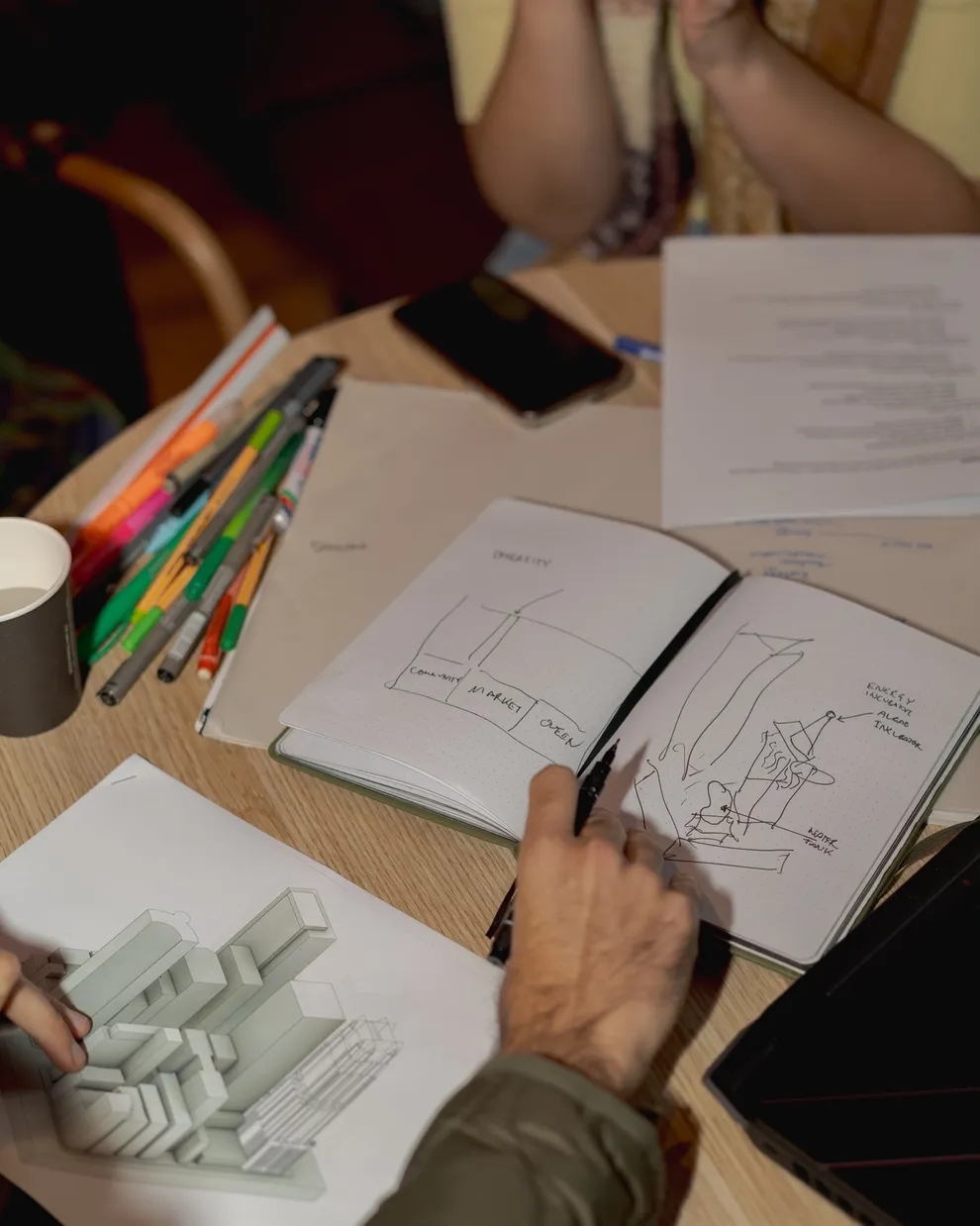
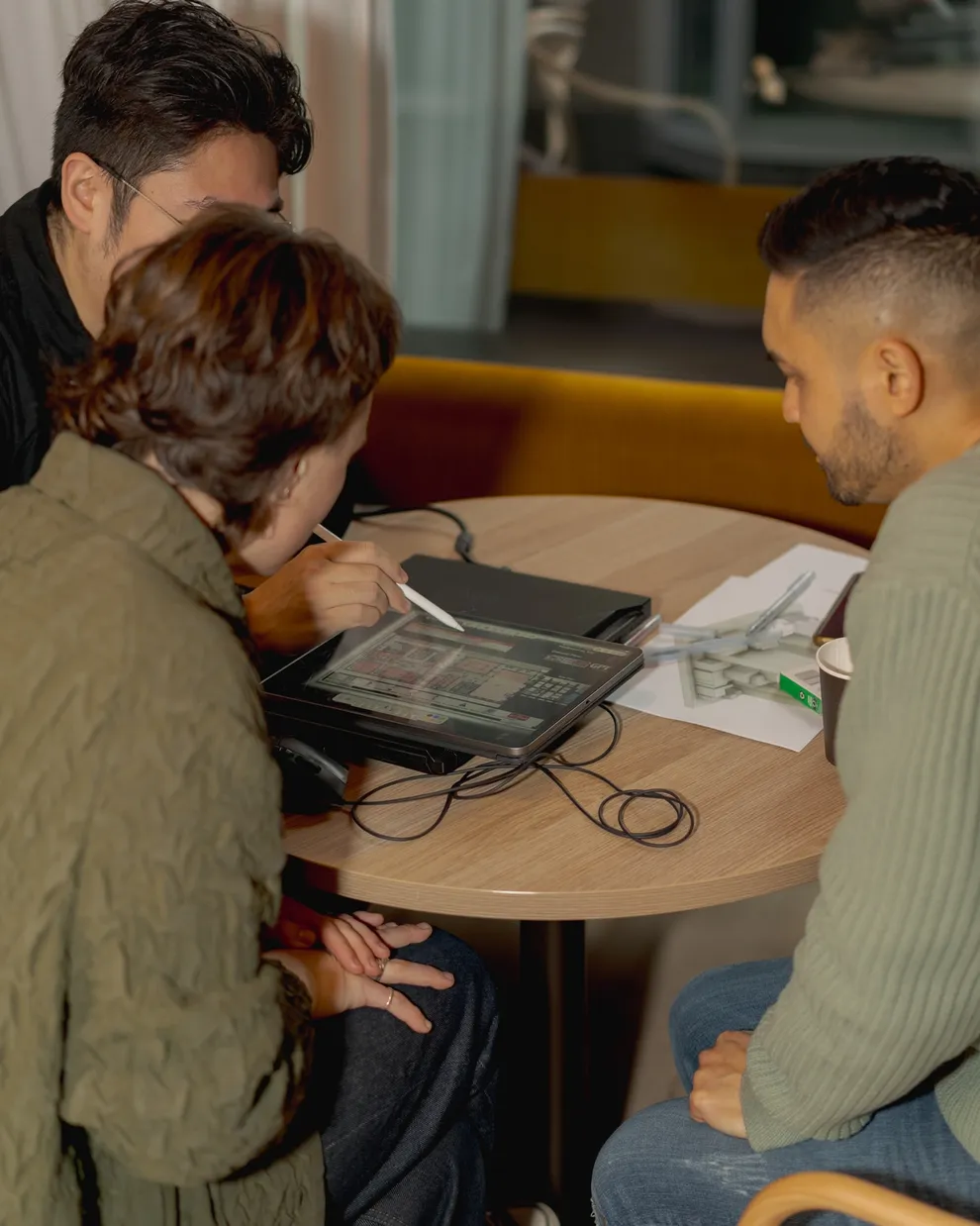
Photos: Benjamin Burrato.
Given the way current crises and potential solutions will affect future generations, we called on students and recent graduates for their responses to the environmental and social advantages and challenges of Retrofitting Our Cities.
On Saturday 25 May, 16 students teamed up for a Design Sprint to develop and present concepts for radical building adaptation, precinct evolution and building circularity. The sprint was hosted by BVN’s Head of Brand and Communications Mitch Page
Congratulations to Ellie Marks and Lily Simpson — from the School of Architecture and the Built Environment at Deakin University — for their winning pitch 'Fill in the _____.' Stay tuned for more from this dynamic duo. As part of their Design Sprint prize, Ellie and Lily will expand on their proposal in an upcoming article.
Our cities are perpetually evolving, undergoing continuous transformation and refinement. The pace and waste of knock-down-rebuild development is responsible for a significant share of our collective carbon footprint. To meet our climate commitments, we need to take an editing mindset; retrofitting, re-invigorating, and tuning what we have.
Simply put, we can no longer afford to build new.
Architect and Head of Brand & Communications, Mitch Page.
While the topic of retrofitting and adaptive reuse is far from new – indeed Melbourne and cities all the world over are peppered with inspiring examples of retrofit and reuse excellence – keeping this dialogue alive spurs collective commitment into collaborative action.
We extend our gratitude to our panelists, facilitators, hosts, participants, supporters, team and audience for making these events such a success. There will be more stops on the retrofit roadshow. Look out for our events in your city.
Retrofitting Our Cities was presented by BVN in association with KTA, Breathe and The GPT Group as part of Melbourne Design Week 2024 at Queen & Collins on the traditional lands of the Wurundjeri and Woi-wurrung of the Kulin nation.
